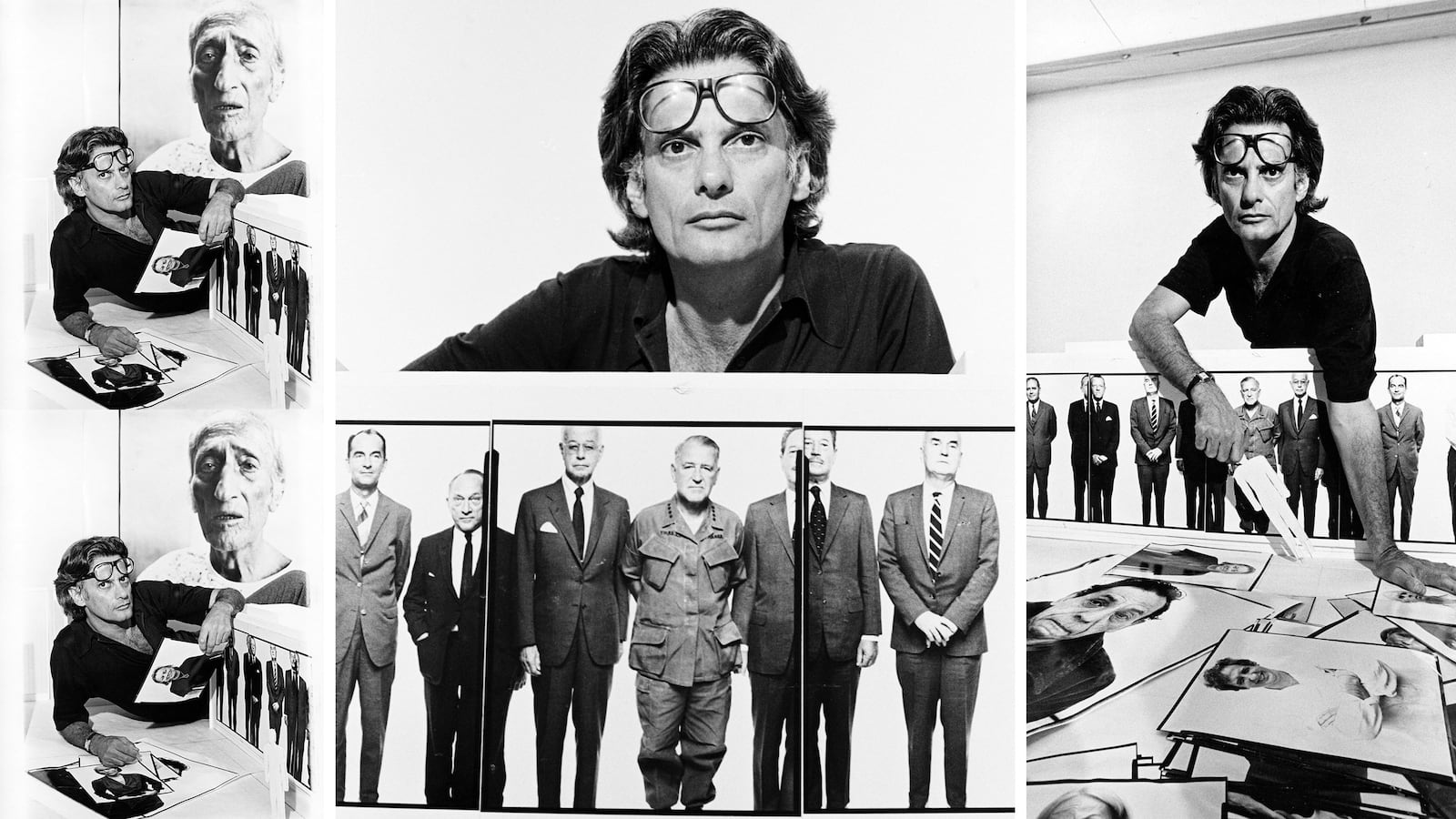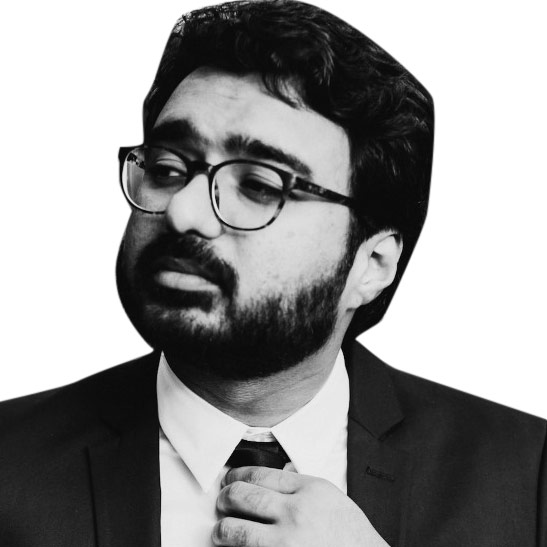In October 1966, photographer Richard Avedon arrived in “the Valley of Hell” on the Japanese island of Hokkaido, where sulfur seeps from the rock face to create plumes of otherworldly smoke. Avedon was there for a Vogue photo shoot with mononym model Veruschka and a seven-foot-tall sumo wrestler in training, who had been wrangled three weeks earlier in Tokyo to be Veruschka’s partner for the romantic spread. The resulting photographs were published as part of a 26-page odyssey that fashion editor Polly Mellen referred to as “the longest, most luxurious, most expensive shoot in history.” Looking back, Veruschka would later say of Avedon, “I was always very aware that I was working with the best photographer in the world.”
But Veruschka was working with others too. Mellen, for one, was styling her wardrobe. And Gideon Lewin, Avedon’s studio manager, was pulling triple duty: He was the onsite technician, servicing jammed cameras; the first assistant, lighting the subjects with a pair of battery-powered strobes; and the unofficial behind-the-scenes documentarian, capturing Veruschka looking out the window of the bullet train from Tokyo, Mellen adjusting the model’s fur coat, and Avedon jumping for joy amid the sulfur vapor.
Such candid shots are collected in Lewin’s forthcoming book, Avedon: Behind the Scenes 1964-1980. The period covers the author-cum-photographer’s tenure with Avedon, which included groundbreaking photo work, such as the psychedelic Beatles posters produced for Look in 1967, and landmark exhibits, like the Metropolitan Museum of Art’s retrospective of Avedon’s work in 1978—making him the first photographer to be celebrated in such fashion. Between Lewin’s professionally composed snapshots are the stories behind the shoots: the four-months of experimentation with solarization for the Beatles posters, the painstaking process of printing three decades worth of work, often retouched and enlarged without the aid of computers, for the retrospective. While the stories are sometimes rote and the pull quotes from models read as promotional blurbs, Lewin’s photographs reveal otherwise hidden moments of art history, presented in full-size glory.
I spoke with Lewin about his relationship with Avedon, the challenges of making innovative photography in the pre-digital era, and his new book. Our conversation has been lightly edited for clarity and brevity.
You were first Avedon’s assistant and then manager of his studio, but you were more deeply involved in his work than either of those titles suggest. Do you think the collaborative nature of photography is sometimes obscured by the emphasis on the photographer and subject?
First of all, title has nothing to do with anything! I think that most artists—painters or photographers—have assistants who do a lot of the work. But the fact is, whoever signs the bottom line, the painting, the sculpture, or the photograph, is the artist who is acknowledged. But it is a relationship. My relationship with Avedon was very close. We collaborated. It was really a professional relationship where he acknowledged me, crediting me as his technical adviser.
I remember the first time Avedon said that he wanted me to think about a project. I thought about it overnight, and I came back the next morning and said, “You know, it can’t be done this way.” He said, “There’s no such thing, ‘It can’t be done.’ Everything has a solution. Go back and think about it.” That was the last time I said, “I don’t think we can do it.”
Everything has a solution, that became the routine—like when we talked about solarization. I had taken solarization in school and had to do it for the Beatles poster for Look magazine. But I refined it. I was able to find another way of doing it that was perfect for that project. I had control over the solarization, which generally you have very little control over.
The other big project was doing the murals of the Chicago Seven, the Warhol Factory, and the Mission Council, which were 10 feet tall, 30 to 35 feet wide. The panels had to match to piece together. Nobody had ever made prints that large to hang in a museum. This was really a tremendous feat, mounting them on canvas and hanging them on the walls like tapestry. These were ideas that were totally innovative. I had many highs like that over the time that I worked with Avedon. You learned every day.
One aspect of photography that really shines through in both the photos and stories from Avedon: Behind the Scenes 1964-1980 is how manual the process used to be. Do you feel like digital technology today has made being a photographer “too easy?”
The photographer is not really the camera. It is the eye that is really important and the knowledge that is behind the editing of what you photograph. The technique can be varied. Everybody does things differently. The film is processed differently, printed differently, materials are different, so on. But the photograph itself is the eye of the photographer, that composition, that lighting. You have to have knowledge of art, you have to really understand what you’re doing. In today’s age, a lot of it is lost. Most people just take photographs; it’s meaningless, there’s no thought behind it. Real photographers understand the new technologies and use them to express themselves. But you have to have the eye first, the idea first. The camera was invented to record, and it developed into creating art.
How did working with Avedon for so many years change your photographer’s eye?
It was an education, and years later when I left the studio, I frequently felt that he was right there behind me, guiding me. He had a great influence on me. And the love for black and white photography was part of it.
I edit differently than he did. We look at people differently. I’m looking for something else. I’m not looking just at the surface, I’m looking at the person within. A lot of my portraits are really conversations, forgetting about the camera and just talking about the world—never about work, more about the universe, until the moment comes and you capture the person you’re talking to.
The photos collected in your book are of a photographer, his subjects, and his team at work, as well as at play. Was there something different you were looking for in these candid shots—something that can’t be found in formally composed work, like portraits?
It’s a matter of telling a story. You’re not always in control of the situation. You try to find the right moments that will make a story interesting and relevant, not just a snapshot.
There were many photographs that did not get into the book for various reasons. First you have to edit to the best of your ability to tell the stories that you want to tell. You’re limited by pages, you’re limited by words, you’re limited by how many stories you can tell. And then I had the limitation of the copyright. The ideal, the original idea, was to show not just behind the scenes, but the actual magazine spreads, where you would have the results. I think that, educationally, it would have been better.
Was the difficulty getting the rights to use those spreads?
You can’t. First of all, Avedon owned the copyrights to all of his images, so you have to get the permission of the Avedon Foundation and you have to get the permission of the magazines. You can’t get the permission of the magazines until the foundation gives you the OK. It’s a convoluted, difficult process, but I think I overcame it.
There seem to be two tensions at the heart of Avedon’s career: between the commercial and the artistic, as well as between fine art and photo. Those tensions were resolved in his retrospective at the Metropolitan Museum of Art in 1978, which solidified Avedon’s work as art and photography as fine art. At the time of the retrospective, were you aware that something had changed in photo?
It took some time for modern photography to be acknowledged as art—really thanks to Richard Avedon, who had four museum exhibitions and New York gallery exhibitions. He put photography on the map for the art world. It’s unbelievable. It was a surprise because photographers, in general, never really thought of their photographs as art because it didn’t take long to make a photograph next to artists who would paint for weeks and months. Photography was too easy, it was quick, so nobody really thought of it as art. But obviously there is a lot more to it than the time it takes to take the picture.
Was that also your intention with the book—to not only share the fun and the stories, but the amount of hard work that went into producing images that come off as so effortless?
Absolutely. It was a lot of work! That’s the difference between an amateur and a professional photographer. Amateurs can take billions of photographs every day around the world with their iPhones, but photographers put the effort into it. There’s the thought, there’s a lot of work even after you take the photograph, there’s still so much you can do to interpret what the final result is going to be. That is really a different situation.
Yes, we put a lot of work into photography. It was a lot of effort with a lot of people who were involved. It’s not just clicking the shutter. The technical ability that we needed to have in those days was way beyond what anybody does now.
Do you think that, because it was so difficult to create those images in the past, that work will be appreciated for much longer than the massive amounts of photographs that are being created today?
Definitely. There’s magic in those photographs that is not in digital photography. Just seeing a print get developed in a dark room, in the tray, it’s magic to see the image coming out of nowhere on the paper. It’s so wonderful. What you can do in the darkroom, it’s hands-on, you really are involved in it. Digital photography, you’re not really involved very much. The technology is all there, you just have to press a button. You can do solarization in seconds on a computer. Is it the same? No, it’s not the same. You don’t have the same emotional involvement. It’s not really hands-on. You don’t have to think about it, how to do it. There’s a lot lost.
Is there a favorite story of yours from the book?
Working on location with Avedon was very different from working in the studio. It was more cinematic. There was always a story behind the pages, some kind of continuity. There was a love affair. It was a different kind of magic—“cinematic” is all I can think of.
The trip to Japan was absolutely fascinating. In Hokkaido, there was plenty of snow and sulfur steam coming out of the mountain. It was an unbelievable set. For all of us, it was the first time in Japan. Just the experience was beautiful, absolutely wonderful. But also I had to do a lot of innovative stuff, improvising with lighting. All I had was a couple of portable strobes working off of batteries. Sometimes I had to take cameras apart too, because they got stuck in the cold.
We were working with Veruschka at the time. Everything was trying to create a Japanese story. Getting the right partner for Veruschka, who was six-foot-two, we found a sumo wrestler who was seven feet tall. These little elements were so important to the story. Being in Hokkaido, we went to a lounge where all of these old people come for the sulfur baths. We were smoking, dancing to a jukebox with Yiddish songs… It was just unbelievable. You lived together, you ate together, you found ways to amuse yourself, like storytelling. There was a lot going on, which was wonderful. You don’t have that usually in the studio. You create friendships, and you create connections, and you create memories.


